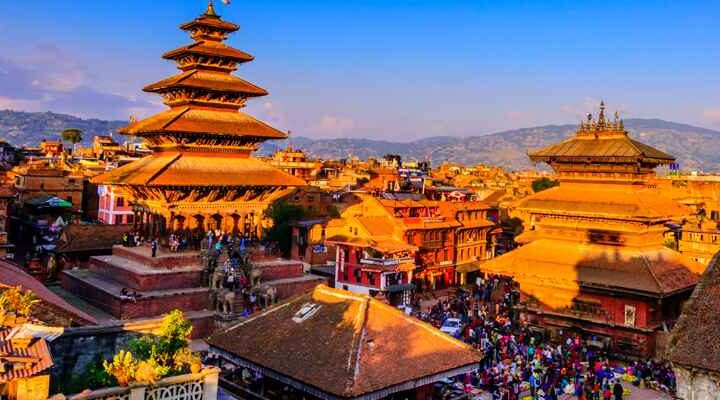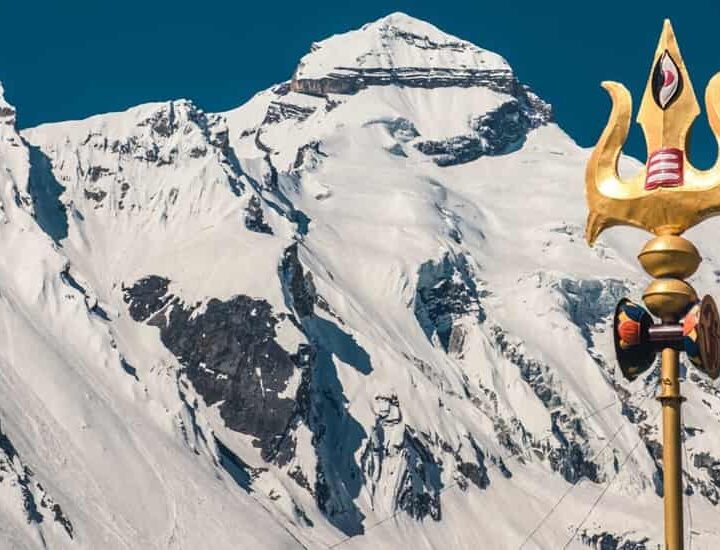Tour overview
The Badrinath Kedarnath pilgrimage from Delhi usually starts with a drive to Haridwar/Rishikesh and then to Gaurikund (base of Kedarnath) and Joshimath (near Badrinath). Pilgrims trek 16 km from Gaurikund to Kedarnath or use ponies, palkis or helicopter services. Badrinath is accessible via motorable roads. The ideal time to travel is May-June and September-October. Registration is mandatory and accommodation ranges from budget hostels to GMVN guest houses. The trip offers spiritual fulfillment as well as stunning views of the Himalayas.
Frequently Asked Questions
When is the best time to visit Badrinath and Kedarnath?
– Best time: May-June and September-October (before snowfall).
– Avoid the monsoon season (July-August) due to landslides and road blockages.
How long is the trip?
Delhi to Haridwar: Approximately 220 km (5-6 hours by car/train).
Haridwar to Kedarnath: Approximately 250 km (8-9 hours by road).
Haridwar to Badrinath: Approximately 320 km (10-12 hours by road).
How to reach Kedarnath and Badrinath from Delhi?
By Air:
Fly from Delhi to Dehradun (Jolly Grant Airport).
From Dehradun, take a taxi to Gaurikund (base of Kedarnath) or Joshimath (near Badrinath).
By Train:
From Delhi, take a train to Haridwar/Rishikesh.
From Haridwar, continue on the road.
By Car:
Drive or take a bus to Haridwar/Rishikesh and then proceed to Gaurikund (Kedarnath) or Badrinath.
3. How to reach Kedarnath on foot?
The trek starts from Gaurikund, which is the last point reached by car.
Distance: 16 km trek to Kedarnath.
Options:
Hike on foot.
Rent a pony, small horse or battery-powered cart.
Helicopter services are available from Phata, Guptkashi or Sersi.
5. Where can I stay during the pilgrimage?
Kedarnath:
GMVN Hotel.
There are simple dharamsalas and cottages near the temple.
Badrinath:
Hotels and guest houses in Joshimath and Badrinath.
6. What is the weather like?
Summer (May-June): Pleasant, with temperatures ranging from 5°C to 20°C.
Monsoon (July-August): Heavy rainfall; risk of landslides.
Autumn (Sept-Oct): Cool and clear weather; ideal for travel.
Winter (Nov-Apr): Snowfall; roads and temples are closed.
7. Are there any specific requirements for the Yatra?
Registration: Mandatory for the Char Dham Yatra. Can be done online or at registration counters in Rishikesh/Haridwar.
Fitness: Be prepared for trekking; carry basic medicines.
Attire: Wear warm clothes and sturdy shoes.
8. Can senior citizens and children undertake the Yatra?
Yes, but it depends on their health. Helicopter services are available for Kedarnath to reduce physical strain.
9. What are the main attractions besides the temples?
Kedarnath: Bhairavnath Temple, Chorabari Tal (Gandhi Sarovar), Vasuki Tal.
Badrinath: Mana Village, Vasudhara Falls, Tapt Kund, Charan Paduka.
10. What is the approximate cost of the Yatra from Delhi?
Budget varies depending on mode of transport and accommodation:
– By Road (Self/Bus): ₹7,000–₹15,000 per person.
– By Helicopter: ₹20,000–₹30,000 per person (for Kedarnath).
– Accommodation: ₹500–₹5,000 per night.
Included
- - Yatra Registration permit
- - Stay with breakfast and dinner
- - Private car for the tour
- - All hotel tax
Not Included
- - Guide, portage, tips, lunch, emergency expenses, lunch, puja, helicopter tickets, pony, and extras not mentioned as inclusions.
- - GST@5% will be extra
- - Helicopter Ticket for Kedarnath Ji (To & Fro)
Day 01: Delhi – Haridwar
Welcome to Do Dham Yatra. Arrive from Delhi Airport/Railway Station, drive to Haridwar via Rishikesh and stay overnight at Haridwar hotel.
Day 02:Haridwar – Guptkashi
Check out after breakfast, drive to Guptekarshi and stay overnight at hotel.
Day 03: Guptkashi – Kedarnath
Early morning, depart for Kedarnath Dham after breakfast. Enjoy Kedarnath Darshan. Overnight at Kedarnath.
By Helicopter: In the morning, our driver will take you to the pre-booked helipad. You can tell the driver your arrival time, whether you are arriving by helicopter or trekking, so that the driver can pick you up. (Note: This package does not include helicopter tickets.)
Trekking: In the morning our driver will take you to Sonprayag, then you have to take a local jeep to Gaurikund, then your trekking will start towards Kedarnath Ji. After reaching Darshan, return to Sonprayag along the same road. Parking is a big issue, so if you know the driver’s contact number, he will return to another palace. If it does not work, you have to arrange another taxi or wait for your driver.
Kedarnath: One of the 12 Jyotirlingas of Lord Shiva, the Kedarnath sanctuary offers a picturesque setting against the backdrop of the majestic Kedarnath mountain range. Kedar is another name for Lord Shiva. According to legend, after defeating the Kauravas in the Kurukshetra war, the Pandavas felt guilty for killing their brothers and prayed to Lord Shiva for a ransom. He escaped from them many times and took refuge in Kedarnath in the form of a bull while escaping. When chased, he jumped into the ground, leaving his hump on the ground.
Weather in Kedarnath:- Due to its high altitude, the weather in Kedarnath is cold most of the year. The summers are cool and pleasant here, while the winters are harsh. During the summers, the temperature fluctuates around 20°C. Light-colored woolen clothes are recommended. The winters in Kedarnath are harsh, with temperatures going as low as 0°C. Snowfall is also seen during this time. Due to the extreme chilly climatic conditions, this time is usually avoided by tourists.
Day 4: Kedarnath – Guptkashi
The next morning after darshan, return to Guptkashi by train or helicopter. Overnight at hotel.
Day 5: Guptkashi – Badrinath
After breakfast in the morning, drive to Badrinath. On reaching Badrinath, check in to hotel. After bathing in Tapt Kund, pilgrims perform darshan of Badrivishal and Aarti in the evening. Brahma Kapal is very important for Pinddan Shraddh of ancestors (Pitrus). There are other interesting sites like Mana, Vyas Gufa, Mata Murti, Charan Paduka, Bhimkund and ‘Mukh’ of Saraswati river. It is just three kms from Badrinathji. Overnight at Badrinath.
Mana Village: Inhabited by Indo-Mongolian tribes, it is the last Indian village before entering Tibet.
Vasundhara: As the name suggests, Vasundhara is a majestic and beautiful waterfall. This place is 5 km from Badrinath, of which Mana is a 2 km drive away.
Bhim Pul: On the other side of Mana village, a heavy rock forms a natural bridge across the roaring Saraswati River. It offers a spectacular view of the water roaring through a narrow passage under the rock, said to have been placed there by Bhim, the second eldest of the five Pandavas.
Vyas Gufa (Cave): There is a rock cave near Mana village, where Ved Vyas is said to have appeared in the Mahabharata and Quranic commentaries.
Weather in Badrinath: The maximum temperature is around 18 °C and the average minimum temperature is 8 °C. Therefore, staying in Badrinath requires warm woolen clothes all year round. Badrinath often snows in winter. Winters are very cold, with an average temperature of 5 °C. Due to the extremely cold climate, it is usually closed to tourists in winter.
Day 6: Badrinath – Rishikesh
After breakfast, I drove to Rishikesh. Rishikesh: Named after Lord Vishnu, Rishikesh is a spiritual city for Hindus. Located in the foothills of the Himalayas in northern India, it is also known as the world's yoga center. It is home to many world-famous monasteries. Rishikesh calls itself the "Yoga Capital of the World" and has countless ashrams and a variety of yoga and meditation courses. The fast-flowing Ganges River is surrounded by forested hills within the city. In addition to temples and monasteries, Rishikesh is now a popular white water rafting spot, a backpacker hangout, and a starting point for overnight Himalayan treks.
Day 7: Rishikesh - Haridwar - Delhi (230 kms/7 hours)
Return to Delhi. Upon arrival in Delhi, head to the railway station/airport.



